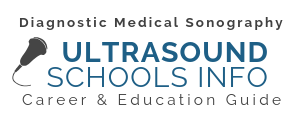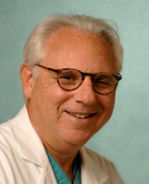Dr. Neal Kassell is the founder of the Focused Ultrasound Surgery Foundation, whose mission it is “to shorten the time from technology development to patient treatment; to foster new applications; and to accelerate the worldwide adoption of focused ultrasound surgery.” We were fortunate enough to speak to Dr. Kassell, a neurosurgery professor at the University of Virginia and chairman of the FUS Foundation, which he founded in October 2006.
Q: When you had your “aha” moment that ultrasound could be used in neurosurgery to treat brain tumors, what inspired this?
Dr. Kassell: At the same time that I had some frustration over the limitations of Gamma Knife treatment for benign brain tumors, as well as other treatments, and was looking around for non-invasive approaches, coincidentally I was doing research in the laboratory measuring blood flow in the brain by the clearance of microbubbles that were burst with ultrasound.
Q: Was that focused ultrasound?
Dr. Kassell: No, that was not focused ultrasound. It was just ultrasound and that’s where I had the idea of maybe you could use ultrasound. Then I went to the web and discovered that yes people have been working in this area and it really had a lot of potential.
Q: For aspiring students and others new to the world of ultrasound technology, how would you describe the process of focused ultrasound?
Dr. Kassell: It’s analogous to using a magnifying glass to focus beams of light on a point and burning a hole in a leaf. With focused ultrasound, instead of an optical lens, an acoustic lens is used to focus multiple beams of ultrasound energy on a point deep in the body [such as a tumor].
Q: I get the sense that you founded the FUS Foundation more to save lives rather than for medical professionals to receive accolades …
Dr. Kassell: The Foundation is all about the patients and everything we do is related to accelerating the development and adoption of the technology so that it helps patients. We’re not concerned with individual glory or people making money. We just want to see the patients benefit.
Q: What have been some of the highlights since you started the FUS Foundation in 2006?
Dr. Kassell: Well, I think the highlights are the number and quality of people involved, whether it’s the Foundation’s donors or the Board of Directors or the fabulous people with the device manufacturers, as well as the people with NIH and the people with FDA. The focused ultrasound community is just an outstanding group of people—that’s one thing. And then the second thing is the spark that really ignited the field: the essential tremor patients that were treated here at the University of Virginia. That sort of validated the technology and it shifted the dialogue from “if this technology is real and has a role” to “when will it be available to treat a whole variety of disorders”.
Q: Currently the use of focused ultrasound is approved to treat uterine fibroids and pain from bone metastases in the United States. Are there any additional treatments expected to be approved in the near future, in the U.S and/or elsewhere in the world?
Dr. Kassell: For essential tremors, a pivotal clinical trial needs to be done, so approval is two to three years off. There are a couple clinical trials on low-grade prostate cancer that have just been approved to be conducted. In Europe of course, there is more widespread regulatory approval for uterine fibroids, bone metastases, prostate cancer, essential tremor, neuropathic pain and tremor-dominant Parkinson’s disease.
Q: Is there anything you would like to add?
Dr. Kassell: I think the message is that this is a revolutionary technology that has the potential (and I emphasize the potential…) to improve the lives of millions of people. It could be as important to therapy as MR-scanning was to diagnosis (and MR-scanning revolutionized diagnosis). So focused ultrasound could (and I emphasize could) revolutionize therapy to the same degree that MR revolutionized diagnosis.
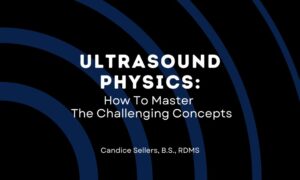
Candice Sellers, B.S., RDMS – Contributor Students attending ultrasound school consistently report that ultrasound physics is one of the most difficult courses in their program. It’s a required course and one that is important to master. Below you will find study tips and tools available to students to help them focus and hone in on…
How I Mastered Ultrasound Physics
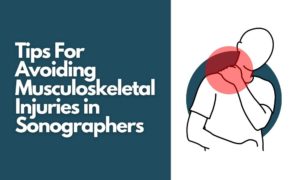
By Adrienne Hardy, RDMS (Ab, Ob/Gyn) – Contributor According to the SDMS, 90% of sonographers will sustain a work related musculoskeletal disorder; 20% will have a career ended because of the injury. With numbers this high it seems like it’s an inescapable truth that you must scan in pain or get injured at some point…
Most Common Injuries in Sonographers
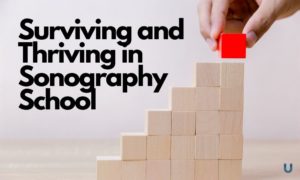
By Adrienne Hardy, RDMS (Ab, Ob/Gyn) – Contributor As I sat in my entrance interview for sonography school the professors spattered me with questions: “Do you have enough savings? What is your home like? How do you manage your time? Do you have someone who cares about your success and will support you in hard…
Surviving and Thriving in Sonography School
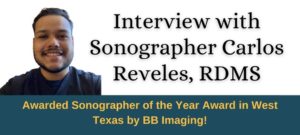
We recently had the pleasure of speaking with Carlos Reveles, a high risk Ob/Gyn sonographer. In this interview, Carlos shares with us what led to him being recently recognized as a standout sonographer by his employer, and what it’s like being a male in a traditionally female field. Welcome Carlos! Hello my Name is Carlos…
Explore Carlos’s Sonography Journey

Adrienne Hardy, RDMS (Ab, Ob/Gyn) – Contributor I clicked submit on the SPI physics exam and ran out the the room. The test proctor handed me a piece of paper with a huge scared looking picture of myself taken before the exam, my ARDMS number and the results of my SPI examination. My hand shook as…
Passing the Sonography Principles and Instrumentation Exam

Candice Sellers, B.S., RDMS – Contributor The Ultrasound School Experience Ultrasound school is a very exciting and rewarding experience. The excitement of finally reaching your goal of getting accepted into an accredited ultrasound program is certainly a tremendous milestone! However, there will be moments of frustration and stress that will occur during your journey in…
How I Managed Stress While in My Sonography Program
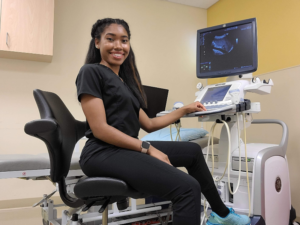
DruAusten Fields, RDMS (AB, OB/GYN), RVT – Contributor The Skilled Sonographer, DruAusten Fields, RDMS (AB, OB/GYN), RVT looks back on the development of her SPI test prep mini-course, and her work to help others pass their SPI exam. When I look back on where I started versus where I am, I can confidently say I have…
Tap into Dru’s Diagnostic Imaging Expertise
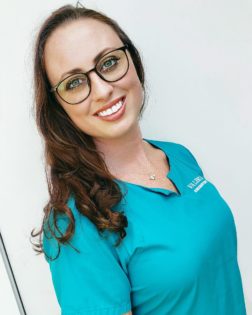
Adrienne Hardy, RDMS (Ab, Ob/Gyn) – Contributor What to expect as you transition from DMS student to the medical imaging workplace. Congratulations! You ran the marathon of Sonography school and now have gotten a job! What a relief, right? All the pent up anxiety and pressure of ultrasound school feels let off like a pressure valve…
Surviving the Transition: From Student to Sonographer Pro!
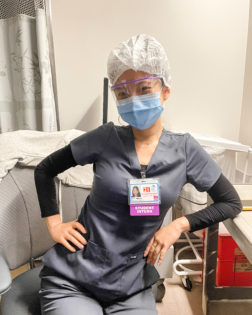
Lynn Nguyen – Sonography Student & Contributor Join Lynn on her journey as she pursues a 2nd career as a sonographer. Why Sonography? How Did I Get Here? I have never given sonography a thought much less loving the thought that I am going to be a sonographer one day. In high school I knew…
Why I Chose Diagnostic Medical Sonography
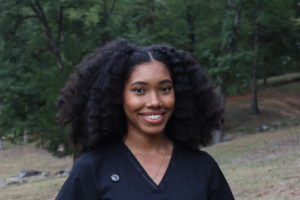
DruAusten Fields, RDMS (AB, OB/GYN), RVT – Contributor The Skilled Sonographer, DruAusten Fields, RDMS (AB, OB/GYN), RVT shares her sonography story! From Indecision to Decision Deciding on a lifelong career can be stressful, especially at a young age. During high school was when I began toying with the idea of pursuing a career in the…
Systems for Success in Sonography

Sam Callis, contributor at USI, is an author and sonographer with experience in multi-specialty clinical practice, higher education, and the medical device industry. She is the author of Diagnostic Medical Sonography – The Definitive Guide to Planning Your Career. We were first introduced to Samantha back in 2019 with this terrific interview in which she…
From Art to Science: A Sonographer’s Unique Career Path
The demand for healthcare professionals, including those specializing in medical imaging, continues to rise. As the aging baby boomer population grows, there is an increasing need for diagnostic imaging procedures, alongside a demand for new providers to fill positions vacated by retiring workers. This ongoing expansion in medical imaging careers presents excellent opportunities for individuals…
Updated for 2025
